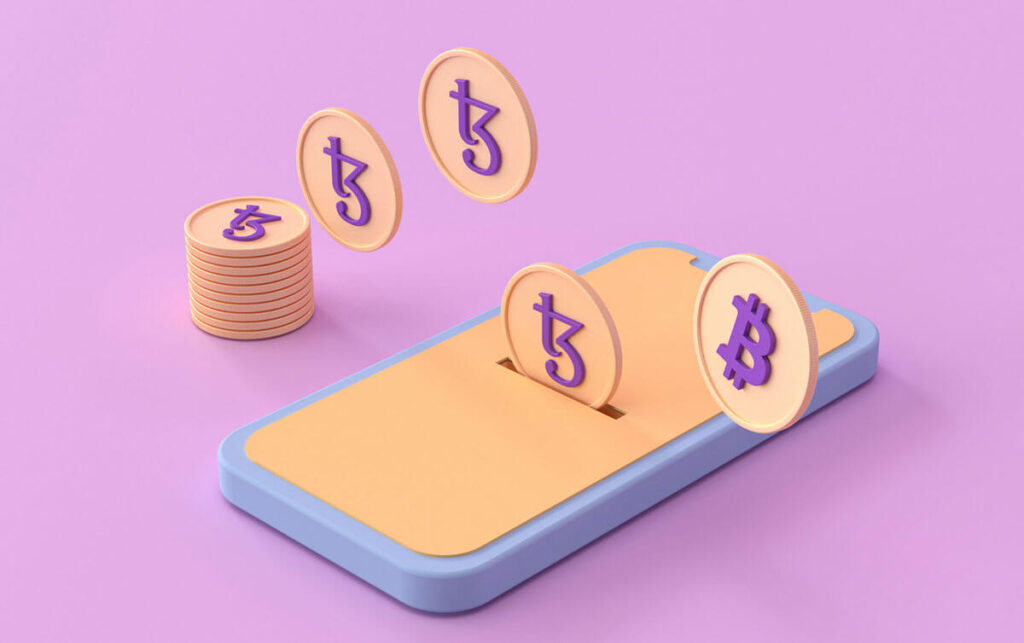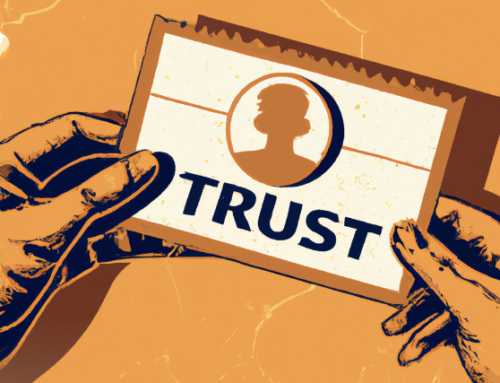by Jeff Milligan, Vice President, Customer Success, Web3 Pro
Web3 marketing will transform the way brands attract, engage, and delight their target customers in the near future. It is still a relatively new concept, but many CMOs are already experimenting with it, analyzing it, and learning about the marketing value of non-fungible tokens.
What are NFTs (non-fungible tokens)?
An NFT is an encoded digital asset (or token) that is based on smart contract technology. Often, these digital collectibles represent real-world objects. Stored on a blockchain, each NFT is unique and cannot be duplicated, thus making it non-fungible. NFTs are bought and sold online, generally with cryptocurrency, in a market that is projected to increase to over $13 billion in value by 2027.
NFTs are also a key component of Web3, the next generation of the World Wide Web. The world’s leading internet technology providers, along with startups and venture capitalists, are already investing in Web3 development.
Web3 will run on public blockchains, which are decentralized. Each individual can own her personal share of the internet. It is also permissionless and anyone can join.
NFTs provide new ways to blend the digital and physical world and brands can pair unique digital assets with the physical products they sell.
As digital tokens become increasingly mainstream in brand marketing, it’s important for CMOs to start planning their NFT strategy even now.
There are nine categories of NFTs:
- Art – Tokens in the form of static images, short videos, or GIFs.
- Music – Artists monetize their music by selling NFTs of their songs or live performances directly to their fans, bypassing middlemen.
- Video game content – In-game tokens such as skins, characters, and other items.
- Trading cards and collectible items – Tokens showcasing celebrities, athletes, public figures, pop culture characters, products, and more.
- Sports moments – Short video clips of great moments in sports history which become collectibles for fans of all ages.
- Memes – Digital tokens of amusing and interesting items, such as captioned digital pictures or video, which are then shared widely online.
- Domain names – Registered domain names sold on the NFT market. The buyer owns her URL and avoids paying domain registration fees.
- Virtual fashion – Apparel and jewelry digital avatars, which become accessories in their own right.
- Miscellaneous digital items – Tweets, Facebook statuses, articles, Snapchat Stories, TikToks.
The role of NFT marketing for brands
Internet entrepreneur and digital marketing futurist Gary Vaynerchuk (aka Gary Vee) believes that NFTs have three areas of value: utility, access, and social currency.
“NFTs are empowering real ownership of digital items that can often be used as utilities,” says Jesse Johnson, founder and COO of game development team Pixelcraft Studios. Utility can mean that the NFT provides some useful value, such as rewards, future discounts, or additional information not provided to others in the same form.
Access can come in the form of a ticket to special events, programs, invitation-only content, or VIP/membership privileges. The Allen Iverson Roundball Classic is a basketball tournament that showcases the best high school players in the United States. In 2022, for the first-time in All-American sports history, tournament fans were able to buy an NFT ticket that also granted them VIP access to the actual game.
Social currency is related to status, image, or personal branding. In Web2, the current generation of the internet, social media content like the individual’s bio, photos, videos, likes, and follows portrays a public message about that person. This public social media platform offers a sharable view of a person’s interests and activities: “This is who I am, what I like, what I do, and what I stand for.” In the future Web3, the digital tokens the person holds in her public NFT wallet can serve as social currency or status.
Seven NFT marketing strategies
There are seven NFT marketing strategies companies can experiment with today to begin enhancing value for their customers and their brand.
- Drive positive PR coverage with creative campaigns
- Drive brand loyalty with NFTs as collectibles
- Drive new and repeat purchases with NFTs
- Build brand awareness with in-game advertising
- Build brand awareness with non-gaming metaverse advertising
- Fight product counterfeiting with NFT proof of authenticity
- Build customer engagement through brand community involvement
NFT marketing strategy 1 – Drive positive PR coverage with creative campaigns
In early 2021, Taco Bell introduced its NFT Taco Art campaign. The company minted and sold 25 tokens from five original designs for the price of $1 each, encouraging fans to “own their favorite tacos and hold them in their hearts and digital wallets.” Each of the original 25 token owners were bonused with $500 electronic Taco Bell gift cards. The tokens sold out in 30 minutes and profits from the sale were donated to charity. One of the tokens was recently offered for sale in the marketplace for the price of 3.9 ETH – June 2022 value about $4000. As the minter of the tokens, Taco Bell gets 0.01% in each subsequent sale, which it also donates to charity.
Due to the novelty of the campaign and public curiosity, Taco Bell’s NFT story was widely covered in the North American PR news cycle. There were hundreds of articles, blog posts, videos, and tens of thousands of link shares and millions of impressions. From an earned media perspective, Taco Bell’s positive brand exposure was a mega victory.
In 2022, there is still a window of opportunity for other brands to similarly capitalize on PR coverage with NFT marketing. However with time, as the idea of “pairing token ownership with a product purchase” grows in the public’s consciousness, marketers will need to become more creative to achieve such volumes of earned exposure.
NFT marketing strategy 2 – Drive brand loyalty with NFTs as collectibles
In 2022, 23% of millennials in the US collect NFTs. One out of every three U.S. adults said they collect some sort of physical item, as either a hobby or an investment. About half of physical collectors said they are interested in trying NFTs.
Men are three times more likely than women to be NFT collectors. Consumers loyal to their favorite brands have long been collectors of their brands’ physical items. From t-shirts to drinkware, from signage and retail displays to packaging, collecting objects linked to brands has been a passion for more than a century. NFTs enable these collections to be proudly displayed, talked about with other fans, and shared with new audiences all over the world.

Among those who collect objects linked to brands, 51 percent say they would be interested in acquiring, investing in, or trading branded NFTs in the future.
NFT marketing strategy 3 – Drive new and repeat purchases with NFTs
Gamification, programmatic rewards, and incentives will attract new customers to brands offering them NFTs. For current customers, digital tokens can be programmed to provide dynamic value, personalized to their interests and behaviors.
Based on purchase volumes, customers can receive rewards, incentives and status recognition. Contests, promotions, cross-selling offers, and membership incentives can all be dynamically programmed into the digital token.
Imagine two competing brands, comparable in price, availability, and quality. If one had offers and incentives that were digitally encoded into the token and the other did not, which brand is more likely to win the consumer? Of course, this question is relevant only today. The competitive landscape will shift and evolve and NFTs will soon likely be offered by all brands. When that happens, it will be the quality of the experience enabled through the NFT rather than simply the novelty of the NFT. But early movers today will always have an advantage.
NFT marketing strategy 4 – Build brand awareness with in-game advertising
By 2023, there will be more than three billion gamers, comprising roughly 40% of the world’s population. Today the gaming industry is bigger than Hollywood and the music industry combined. Gaming will continue to grow in the foreseeable future, with spending on in-game ads expected to reach $18.4 billion by 2027. Branded digital skins and accessories, along with display advertising and promotional product placement, create limitless opportunities for brand exposure.
An April 2022 study that are seamlessly integrated into their playing experience. Over 40 percent of US gamers ages 18-34 want to be rewarded for their time and attention to in-game ads. Perhaps a model could be offered in which gamers received points or credits for allowing an ad to be displayed during their gaming experience. Finally, the study shows that only 32 percent feel that ads should never interrupt a hardcore gamer’s flow.
In the same study, 66 percent of gamers said they feel positively about companies and brands in-game, especially if the integration unlocks a benefit for them. The study showed that 27 percent of gamers have clicked on an in-game brand and 48 percent say they have purchased a brand after seeing or interacting with that brand in-game. These findings show that in-game brand integrations may be most accepted by gamers if they are non-interruptive and incentive-based.
NFT marketing strategy 5 – Build brand awareness with non-gaming metaverse advertising
Web3’s potential goes far beyond gaming. The metaverse will be a collection of digital environments where people will gather to work and play. Some of these online spaces will be immersive 3D experiences using virtual reality and augmented reality headsets and glasses. Other metaverse experiences will involve traditional two-dimensional viewing on a conventional screen.
Business meetings will be held in a metaverse New York’s Wall Street, London’s Canary Wharf, or a high-rise office building in Tokyo. Imagine your brand message posted on signage on the Champs Elysees. Imagine your product placed on a table in the conference room in front of your prospect.
If all these concepts sound like fantasy, they will no longer seem that way when your target audience begins spending more and more of their life in these metaverse worlds.
NFT marketing strategy 6 – Fight product counterfeiting with NFT proof of authenticity
In 2021, three luxury goods companies created a consortium to provide shoppers with a blockchain-based seal of authenticity. Louis Vuitton’s parent company LVMH, along with Prada and Cartier unveiled its private cryptographic provenance platform, the Aura Blockchain Consortium.
One of the luxury watch brands provides customers with a digital e-warranty with their purchase. The warranty is stored in the Aura infrastructure, and it allows customers the ability to verify the authenticity of their watch with a photo taken with their mobile phone.
NFT marketing strategy 7 – Building customer engagement through brand community involvement
Passionate brand loyalists feel an intimate affinity with the products they love. They cherish a sense of connection and a feeling of belonging to a special club. This drive to engage is even stronger when the brand purpose is aligned with their personal values. NFTs create opportunities to get customers involved with brands at a deeper level.
Reddit is experimenting with ways to use digital tokens which allow users to own a share of the Reddit communities where they are active. Users would use tokens known as “community points.” They earn points by posting on a particular subreddit. They accrue more points for upvotes that post gets from other Reddit users. Points serve as voting shares on decisions that will affect their community.
The future of Web3 marketing
“Web3 marketing is a long-term strategy and companies should not think of it as a short-term fad or gimmick,” says Christian Ferri, Founder and CEO of Web3 Pro, a full-service company that provides Web3 market guidance and solutions to global brands.
A brand’s NFT / Web3 strategy must be aligned with its core marketing and business strategy. A poorly designed and executed NFT initiative can backfire. It can confuse current and potential customers, potentially damaging a brand’s perceived value in the market.
Protecting and preserving the brand’s long-term value is paramount. Positive coverage in earned media is always the goal. As marketers plan for NFT-based campaigns and projects, they must mitigate any potential risks of negative PR or consumer sentiment.
“In five to seven years, every single transaction of records over the internet will be tied to an NFT,” said Christian Ferri, CEO of Web3 Pro.
NFTs will increasingly play a more vital role in all the five stages of the buyer’s journey. From awareness to consideration to decision and extending to retention and loyalty, NFTs will help strengthen brand equity and the total customer experience.
NFT marketing will shift from mystifying brands to becoming a proven, critical component in mainstream customer marketing strategy. It will take time for brands to migrate to Web3 and NFT marketing while understanding the opportunities and risks that are most relevant to the brand and customer experience. The time to accelerate the learning process should be sooner rather than later. Start now.




